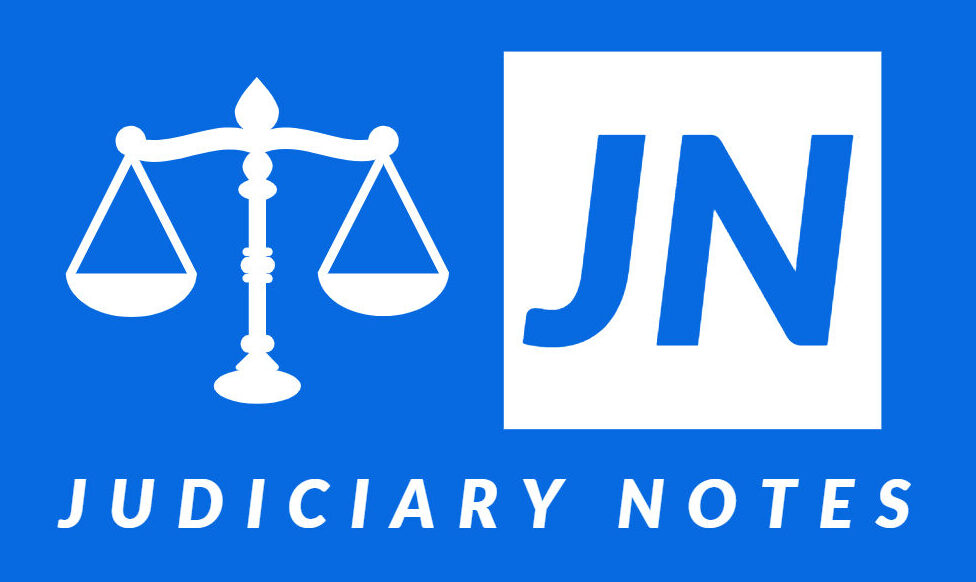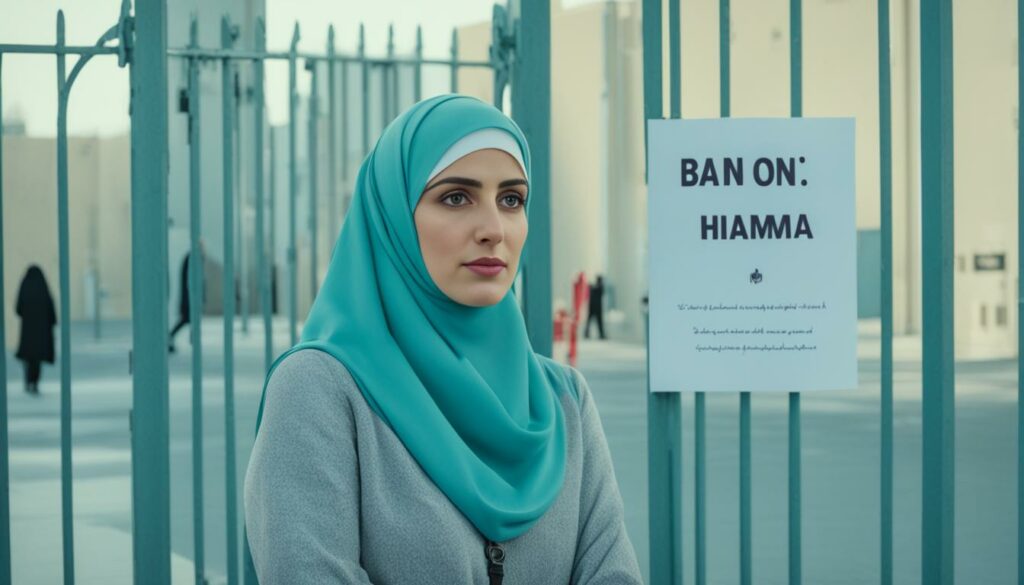The Bombay High Court made a key decision. It threw out a petition by nine women students. These students were fighting against a rule at their college. The rule banned all types of headgear, like hijab, burqa, stoles, and caps. The court said the college has the right to set a dress code for students. This does not break their rights under the Indian Constitution.
The court backed the college’s goal. The college wants students to focus on learning, not on religious symbols. It said that was the college’s right. Their decision supports the college’s management rights. Even though it goes against the students’ wish to wear religious clothes. The court ruled the ban was not against the students’ rights to follow their religion, have privacy, and choose what to wear.
The court chose not to change the college’s dress code rule. This shows the tricky relationship between individual religious rights and school rules. The case brings back debates on how much religious expression and dress rules schools should have.
Bombay High Court Dismisses Writ Petition Challenging College’s Hijab Ban
The Bombay High Court made a big decision. It dismissed a case by nine women students. These students were against a Mumbai college’s rule that stopped them from wearing hijabs, burqas, stoles, caps, naqaabs, and badges in class.
The students come from the Chembur Trombay Education Society’s college. They said the college’s rule went against their rights. These rights are in Articles 19(1)(a) and 25 of our Constitution. They talk about freedom to speak and follow your religion.
Court Finds No Violation of Fundamental Rights or Religious Freedom
The High Court said something else. Justices A.S. Chandurkar and Rajesh Patil decided the college’s rule was okay. They said the rule helped students focus on school. The rule stopped religious things from being shown in class.
The college’s lawyer said the rule was for everyone, not just Muslims. The court agreed. They said the rule was fair. It was to keep everyone the same. And to make sure no student’s religion made them different.
“The college’s dress code did not violate the students’ fundamental rights or their religious freedom,” the court stated in its ruling.
The judges thought the college had a good reason for its rule. They said it was to help students learn without fights over religion.
After the Bombay High Court said no, the students might go to the Supreme Court. They want a new decision. This case makes us think about how schools and religious rights work together.
HC refuses to interfere in hijab ban decision of Mumbai college
The Bombay High Court decided not to change a college’s hijab, burqa, and naqab ban. The college, N. G. Acharya and D. K. Marathe College, wants students to concentrate on studies. They believe showing religion openly could disrupt this.
The court made this decision after nine girl students protested the ban. They said it goes against their right to religion, privacy, and choice. But, the court decided the dress code doesn’t break specific laws in the Indian Constitution.
College Cites Uniform Dress Code and Focus on Education
In June, the college set a new dress code for everyone. It bans headgear like hijabs and burqas to keep religious signs hidden. This way, the college thinks students will focus more on learning.
This rule is for all religions, not just for Muslims. The college even made changing rooms available so girls can follow the dress code. They see this as their right as an educational institution.
“The college’s objective was to ensure students focus on gaining knowledge and education. The court found that the dress code does not violate provisions of Article 19(1)(a) and Article 25 of the Indian Constitution.”
The court said the girls didn’t prove wearing hijab or naqab is a must in their religion. Thus, the college’s dress code stands. It’s seen as fair by the college and the court.
The court mentioned the girls might have filed the petition too soon. Plus, they did this before the college even accepted them. On June 19, the court heard more about the case’s chances.
Petitioners Argue Ban Violates Right to Privacy, Dignity, and Religious Practice
The hijab ban at a Mumbai college has sparked a heated debate. Nine female students, backed by lawyer Altaf Khan, argue this ban breaks their rights. They believe the college is overstepping its power and hurting their personal freedoms.
These students say the hijab and niqab are not against Indian culture. They are important for their faith in Islam. They feel the college is wrong to stop them from wearing these religious clothes.
“Wearing the hijab and niqab is an integral part of our religious beliefs and cultural identity. By banning these garments, the college is violating our fundamental rights and forcing us to compromise our values and beliefs.”
The petitioners also point out that the ban on other items like stoles, caps, and badges doesn’t make sense. They feel targeted because of their faith. They’re asking the court to step in and protect their rights.
| Key Statistics | Details |
|---|---|
| Petition Filed | Nine female students from the second and third years of a science degree course filed the petition. |
| Dress Code Violation | The students claimed the new dress code policy violated their fundamental rights to practice their religion, privacy, and choice. |
| Dress Code Restrictions | The dress code imposed by the college includes bans on hijabs, naqabs, burkas, stoles, caps, and badges within the campus. |
| College’s Defense | The college defended the ban as a disciplinary measure to enforce a uniform dress code, applied to all students uniformly regardless of religion or caste. |
However, the High Court sided with the college. It decided the college can set its own dress rules. This ruling has brought up a big question: how can we balance religious rights with school rules?

Court Upholds College’s Right to Administer Dress Code
The Bombay High Court recently made a big ruling. It said a Mumbai college can have a dress code stopping students from wearing hijabs, burkas, and other religious outfits. This decision came after nine students challenged the college. They said the dress code goes against their rights and freedom to practice their religion.
The college, run by the Chembur Trombay Education Society, announced the new dress code on May 1, 2024. This rule was for the 2024-25 academic year. The aim was to keep students focused on learning and not on their religious symbols.
Dress Code Aims to Prevent Display of Religious Symbols
The High Court pointed out something important. They said the dress code doesn’t pick on any one religion. It’s meant for everyone, no matter what they believe. The goal of the dress code is to keep things organized. And to make sure students don’t show off their religious beliefs. The college thinks this is best for everyone’s learning and school running smoothly.
Some students said the dress code hurt their rights. They mentioned two parts of the Constitution. One is Article 19(1)(a), about the freedom to speak. The other is Article 25, about the freedom to follow one’s religion. But the judges said the college has the right to set rules. This is in Article 19(1)(g) and Article 26. They believe a dress code helps everyone learn without distractions.
The High Court ruled that the dress code did not impede students’ freedom of choice or expression within the college premises, and that the college’s objective was to prevent the disclosure of students’ religions for the academic interest of both students and administrative purposes.
This ruling brings up the ongoing talk about religious rights and school rules. The court supports the college’s authority to have a dress code. But it also has people thinking. How much can these rules affect students’ basic rights? This is especially important for students in smaller religious groups.

The students who took the college to court might go to the Supreme Court next. This could lead to a big legal fight. It would look closer at how colleges handle religious clothing and students’ rights.
Religious Rights in Educational Institutions: A Delicate Balance
The Bombay High Court made a big decision about a hijab ban in Mumbai. It shows balancing religious rights with school rules. The court said schools can control what students wear. But they must respect the students’ rights to privacy and their religion.
India’s Constitution, made in 1950, protects religious freedom. It says everyone can believe and practice their religion. But, the government can limit these rights for the public good.
The hijab ban debate in India talks about these rights. The Karnataka High Court supported the hijab ban, saying it’s not a must in Islam. The Supreme Court is also looking at this issue very closely.
As the hijab ban case moves forward, everyone looks closely. The courts must think about the rights of students, schools, and the country. This case is very important for our religious and personal freedoms.
“The matter involves a significant number of civil appeals and writ petitions, with multiple parties involved, as evidenced by the extensive list of counsels representing various individuals and entities.”
The hijab ban legal cases show a lot of people care. They say a lot about how we look at religious rights in schools. The court’s decision will affect many people and their rights in India.
Student Protests and Legal Challenges to Dress Code Policies
Nine students fought against their college’s hijab ban in Mumbai. This act sparked protests and legal battles, starting a big discussion on minority rights and school autonomy.
The students, in the second and third year of a science course, said the ban broke their rights. They argued for their religious freedom and personal choices. The college, though, thought the ban was just a rule for everyone, no matter their faith.
Even after trying to involve higher authorities, the students lost in the end. The Bombay High Court backed the college, saying they had the right to keep a dress code for discipline.
Minority Rights and Institutional Autonomy at Stake
The court’s decision highlighted a big issue. Schools want dress rules, but students claim it stops their freedom to show their faith. The hijab ban controversy brings up important questions on how much schools can control what students wear.
Courts in places like Kerala and Bombay have made decisions on this before. They try to find a balance between what’s good for everyone and people’s personal rights. Some say there should be laws supporting dress codes. Others try to keep space for religious activities at schools.
As the fights go on, the student protests and constitutional challenges show a tough spot between keeping order and protecting religious freedom. This situation highlights the big issues in India’s schools today.
“The prescriptive dress code aimed to prevent the disclosure of a student’s religion within the college premises.”
Hijab Ban Controversy Reignites Debate on Constitutional Rights
A college in Mumbai banned students from wearing the hijab. This decision sparked a big discussion about rights and school rules. People are talking about the right to follow one’s religious beliefs and the need for all students to follow the same dress code. They want schools to be focused on teaching and learning.
After the court decided to keep the hijab ban, many are still not happy. They think it’s not fair and are looking for ways to change it. The situation shows the hard balance between personal rights and what schools think is best for studying together.
This ruling has opened up a wider talk about how courts protect the rights of people from different faiths, especially in schools. It’s important for everyone to talk and work together on finding fair answers. These need to protect everyone’s rights and keep schools good places for learning.

